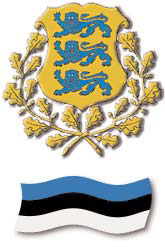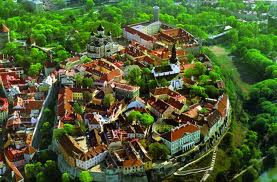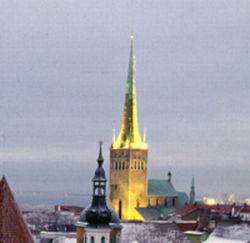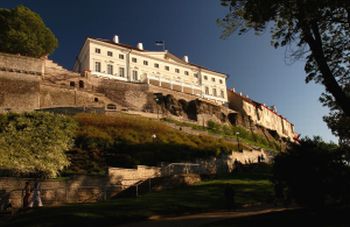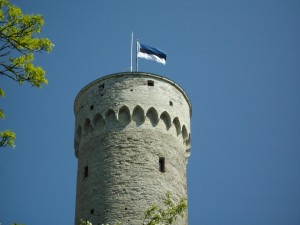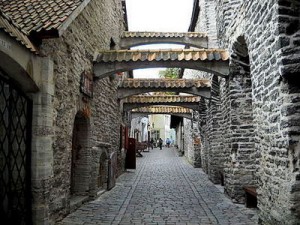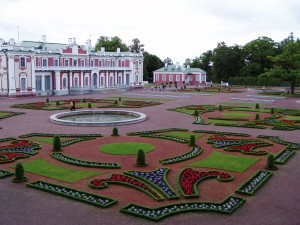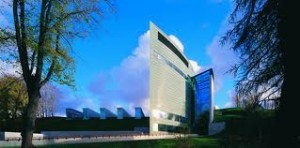About Estonia
Official name: Republic of Estonia
Area: 45 227 km2
Location: North East Europe
Population: 1.34 million (Tallinn: 407 000)
Ethnic groups: 72% Estonian, 22% Russian, 6% other
Capital city: Tallinn
Official language: Estonian. English, Russian and Finnish widely spoken.
National Currency: Euro (EUR) from 1 January 2011.
Time zone: EET (UTC +2)
Traffic: drives on the right
Calling code: +372
Member of European Union, NATO, Schengen Area
One of Europe’s most dynamic, new conference destinations, Estonia never fails to impress delegates with its combination of centuries-old charm and amazingly modern, high-quality facilities. First-time visitors are amazed by Estonia’s Medieval ambience and captivated by the beauty of its rugged coastlines and untouched forests. They’re also surprised by the dramatic transformation the country has undergone over the last two decades, not only catching up with its Western neighbours, but even pulling ahead of them in providing high-tech conveniences.
Tallinn, the capital and largest city of Estonia, is located in Northern Europe in the north-eastern part of the Baltic Sea region. It is considered to be Estonia’s crown jewel, boasts cobbled streets and rejuvenated 14th-century dwellings. Dozens of cafés and restaurants make for an atmospheric retreat after exploring historic churches and scenic ruins, galleries and boutiques. Like most cities with an eight-hundred-year-old past, Tallinn is a patchwork of historic areas. The city’s pride and joy is without a doubt its Medieval Old Town with impressive and worth seeing monuments as Tallinn Town Hall which is the only Gothic style town hall left in Northern Europe, the Medieval Churches, Towers and Gates.
Delegates will have little trouble reaching Tallinn thanks to quick, direct flights from all major European cities. Once here, travellers will immediately appreciate Estonia’s advantage as a ’boutique destination’, one where its small size makes travel times conveniently short. From the airport, for example, downtown Tallinn is only 10 minutes away by bus or taxi. Just as important, the city itself is small enough to navigate by foot. Nearly all event venues, sights and restaurants are concentrated within the compact city centre, eliminating the need for taxis and transfers. What’s more, most major hotels are within five minutes’ walk of one another, making it easy to accommodate a larger group.
As much as it values its history, Estonia is one of the most technologically-minded countries in the world, a place where free wireless internet coverage is available practically everywhere. While being technologically very advanced, Estonia is also a green destination. Systems, from online reservations to AV equipment, are state-of-the-art. Likewise, Tallinn’s major hotels are all either newly built or newly renovated, so they’re as modern and high-quality as they come. These high standards ensure that delegates will be well cared for and that meetings will come off without a hitch.
MAJOR TOURISTIC ATTRACTIONS IN TALLINN
Tallinn is best known for its stunning OLD TOWN, a Medieval neighbourhood of cobblestone lanes, gabled houses, Gothic churches and charming squares. The area, which is protected as a UNESCO World Heritage site, includes a number of one-of-a-kind historic curiosities such as the world’s oldest working pharmacy (open since 1422) and the St. Olav’s Church, once the world’s tallest building. Far from being a museum piece, the Old Town is the heart of Tallinn’s dining and social scene and home to some unforgettable, Medieval-themed restaurants.
A large part of what gives Old Town its character is the system of walls and towers that surrounds it.
Work on the town’s defenses first began in 1265, but the current outline of the wall dates to the 14th century. By its heyday in the 16th century, the wall was 2.4 km long, 14-16 m high, up to 3m thick, and included 46 towers. All these towers had names, some descriptive, some showing a weird kind of Medieval humour. These days 1.9 km of the wall still stands, as do 20 defensive towers and portions of two of the six outer gates.
TOOMPEA CASTLE AND PIKK HERMANN TOWER
Toompea Castle has been the seat of power in Estonia ever since the German Knights of the Sword first built a stone fortress here in 1227-29. Even these days it’s home to the nation’s Parliament. The castle has been revamped countless times through the centuries, but still retains the basic shape it was given in the 13th and 14th centuries. From its front, visitors can only see a pink, Baroque palace dating to the time of Catherine the Great. A look at its opposite side, visible from the base of the hill, gives a much more Medieval perspective. From the Governor’s Garden at the castle’s southern edge, the 46-metre Pikk Hermann tower comes into view. The tower is a vital national symbol: tradition dictates that whichever nation flies its flag over Pikk Hermann
also rules Estonia. Each day at sunrise the Estonian flag is raised above the tower to the tune of the national anthem.
ST. CATHERINE’S PASSAGE
Easily the most photogenic of Old Town’s lanes, St. Catherine is a narrow walkway that runs between Vene and Müürivahe streets, along the back of what was St. Catherine’s Church. What makes the passage particularly interesting is that it’s home to the St. Catherine’s Guild, a collection of craft shops where artists create and sell hats, quilts, ceramics, hand-painted silk and other wares. The workshops are housed in the small, 15th- to 17th-century rooms on the south side of the lane, and are set up in an open-studio fashion so visitors can watch the artists at work, be it glass-blowing, weaving or pottery making. As absorbing as these displays can be, St. Catherine’s Passage is more about ambience than anything else. No other place in Tallinn combines creativity with a Medieval atmosphere quite like it.
KADRIORG PARK AND PALACE
Kadriorg is a quiet, leafy area within easy walking distance of Old Town. After Russian emperor Peter the Great conquered the Baltics in the early 1700s he established an estate and public park on this spot. He named the area Ekaterinenthal (Catherine’s valley, or Kadriorg in Estonian) after his wife Catherine I. The elaborate Baroque palace he had built – along with the surrounding forests, ponds and fountains – are still the neighbourhood’s prime draw. Today, this grandiose palace with its’ surrounding manicured gardens is home to the foreign art collection of the Art Museum of Estonia.
KUMU ART MUSEUM
Another must-see for culture creatures in Kadriorg is the Kumu Art Museum, the mainbuilding of Art Museum of Estonia, serves both as Estonia’s national gallery and as a centre for contemporary art. The complex itself is a work of art – it was opened in 2006 after nearly adecade of planning and construction, and is considered a modern architectural masterpiece. Curves and sharp edges mark out the copper and limestone structure, which is built into the side of a limestone cliff. The 2008 European Museum of the Year Award was given to Kumu.
ACCESSIBILITY
Tallinn is conveniently accessible by airplane, ferry, car or bus.
BY AIR: Most major European cities are less than 2,5 hours away by air. Direct flights are available from all of Tallinn’s neighboring capitals Stockholm, Copenhagen, Helsinki; along with many other major European cities such as London, Frankfurt, Munich, Berlin, Amsterdam, Paris, Milan, Barcelona. The main airlines are Estonian Air, Finnair, SAS, Lufthansa, Easyjet, LOT Polish Airline, Air Baltic and several other carriers. There are no direct trans-atlantic flights to Tallinn, but Tallinn is well connected with Helsinki, Stockholm and Copenhagen airports which can be used for trans-atlantic flights.
Lennart Meri Tallinn International Airport is about 4 km from the Tallinn city centre (10-15 minutes by taxi). Further information about the schedules and operating airlines is available at the homepage of Tallinn Airport.
Information on flights to and from Estonia
BY SEA: Another option to consider when travelling to Tallinn is flying to Helsinki, Finland and taking the ferry over to Tallinn. There is a frequent ferry connection between Tallinn and Helsinki and the ferry takes 2 hours. Ferries also link Tallinn to Stockholm (overnight ferry).
You can find more information about the ferry connection between Tallinn-Helsinki and Tallinn-Stockholm operated by Tallink Silja.
Further companies operating between Tallinn and Helsinki are Eckerö Line; Viking Line; Lindaline.
By Road: Tallinn is 300 km from Riga, Latvia on the Via Baltica, part of the E67 Highway that runs to Prague.
BY ROAD: There is a choice of international bus lines connecting Tallinn with Riga, Vilnius, St. Petersburg and many German and Scandinavian cities. Please find more information about bus connections with Tallinn here: Eurolines; Hansabuss.
BY RAIL: International overnight trains link Tallinn with Moscow, Russia. Please get more information HERE.
Public Transportation within the city There is hardly a need for conference delegates to use public transportation in the city, as the conference venue, all main hotels and major tourist attractions, restaurants and shops are in the city centre and within walking distance.

